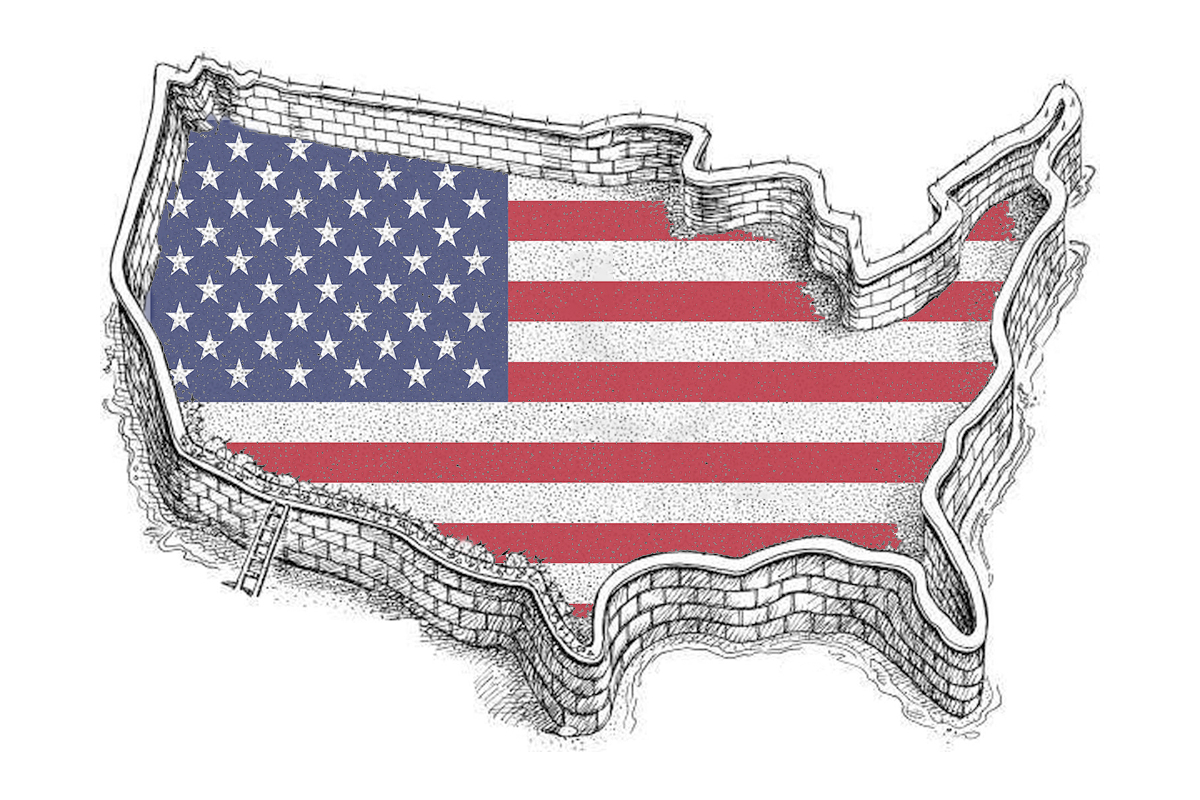Does Your Supply Chain Rely Too Much On the US? Diversify to Global Suppliers
President Donald Trump has announced sweeping new tariffs, imposing a 25% duty on most goods imported from Mexico and Canada, with a reduced 10% tariff on Canadian energy products. Additionally, all imports from China will face a 10% tariff. Originally set to take effect on February 4, these measures have been delayed 30 days following last-minute negotiations. While the White House frames these tariffs as part of broader efforts to address immigration and drug trafficking concerns, the specific benchmarks for lifting them remain uncertain.
For many Canadian businesses, the United States is more than just a significant trade partner; it serves as a vital source of materials, manufacturing, and exports. However, heavy reliance on a single market comes with potential risks. Businesses need to be prepared to deal with uncertainty from tariffs and shifting trade policies to supply chain disruptions and currency fluctuations.
This blog explores the economic impact of US tariffs, potential global responses, and actionable strategies for Canadian businesses to diversify, strengthen resilience, and reduce their dependence on the US market.
Canada’s economy under pressure: The impact of US tariffs
With new US tariffs looming, Canada faces growing economic uncertainty. These trade barriers threaten business investment, economic growth, and market stability. Three key factors will shape the fallout:
Tariff size – With rates as high as 25%, affected industries face steep cost increases.
Industry disruptions – The tariffs cast a wide net, hitting key sectors like automotive, energy, and technology.
Long-term effects – If these trade restrictions remain in place, they could reshape Canada’s economy for years to come.
A Bank of Canada analysis suggests that if a permanent 25% tariff were imposed on all US imports, Canada’s GDP could shrink by 2.5% within a year. Rising import costs will ripple through the economy, leading to higher consumer prices and tighter profit margins—especially for businesses dependent on international supply chains.
Is your business too reliant on the US?
Key questions every business leader should ask:
- What percentage of your revenue is at risk due to tariff changes?
- Can your current supply chain withstand disruptions, or is diversification overdue?
- Do you have a plan to manage international payments to global suppliers?
- Do your contracts have the flexibility to accommodate sudden cost adjustments?
- Are you maximizing government incentives and trade agreements to offset risks?

The risks of overdependence on the US
While Canada and the US share a deep trade relationship under the United States-Mexico-Canada Agreement (USMCA), businesses that rely too heavily on the US market expose themselves to several risks:
Tariffs and trade barriers: The US has a history of imposing tariffs on Canadian goods, leading to financial strain for businesses relying on cross-border trade.
Geopolitical and policy uncertainty: Trade relations are subject to frequent policy shifts driven by political and economic factors. Trade agreements, border policies, and regulatory requirements can change abruptly.
Supply chain disruptions: Border delays, labour strikes, and logistical issues in the US can create widespread supply chain bottlenecks for Canadian businesses.
Currency exchange rate volatility: Fluctuations in the US dollar can impact pricing, budgeting, and financial stability for Canadian businesses trading in USD.
Higher labour and production costs: US-based production and wages are higher than in many other regions, making Canadian businesses less competitive when relying on American suppliers.
Strategic solutions: Reducing dependence on the US
To mitigate the risks of overdependence on the US, businesses should adopt a multi-faceted approach:
1. Diversify supplier networks
Reducing reliance on US imports by sourcing from alternative markets is a key strategy. To achieve this, businesses should:
- Identify suppliers in Europe, Asia, and Latin America.
- Strengthen relationships with domestic suppliers to enhance local supply chain stability.
- Invest in local production to reduce reliance on imports.
2. Expand market reach
A diverse customer base reduces dependency on any single economy. To strengthen their position, businesses should:
- Explore trade opportunities in the European Union, Mexico, and Asia.
- Leverage trade agreements that provide tariff-free access to new markets.
- Target emerging economies that present growth potential.
3. Strengthen supply chain resilience
Businesses must enhance their logistical operations and minimize transportation risks by:
- Identifying alternative transportation routes and reducing reliance on US logistics hubs.
- Increasing inventory buffers to prevent supply shortages.
- Strengthening relationships with international suppliers.
4. Manage currency risks effectively
Currency volatility can impact costs significantly. Strategies to mitigate risks include:
- Utilizing forward contracts to lock in favourable exchange rates.
- Holding multiple currencies in multi-currency accounts to avoid conversion losses.
- Paying suppliers in their local currency to mitigate exchange rate exposure.
5. Leverage digital financial solutions
Businesses can use digital financial tools to optimize their operations:
- Multi-currency accounts: These allow businesses to hold, pay, and receive funds in multiple currencies without requiring constant conversion, reducing costs.
- Automated financial transactions: AI-driven payment solutions improve efficiency and reduce fraud risks.
- Tariff engineering strategies: Modifying production processes or shifting final assembly locations to tariff-free zones can lower costs.
6. Government incentives and trade programs
Businesses should explore government initiatives designed to offset the impact of trade barriers:
- Take advantage of tax relief programs and trade grants.
- Engage in programs that support businesses expanding into non-US markets.
- Collaborate with trade organizations that facilitate market diversification.
Opportunities in uncertainty: Turning risk into growth
The current trade environment presents an opportunity for Canadian businesses to shift their strategies toward long-term sustainability. Companies proactively diversifying their markets and supply chains can emerge stronger and more competitive. Key opportunities include:
- Regionalized supply chains: Expanding partnerships with nearby trade-friendly nations like Mexico and the European Union.
- Increased automation and AI: Leveraging AI and blockchain for supply chain efficiency and financial optimization.
- Legal and trade planning: Implementing tariff adjustment clauses in contracts to mitigate cost spikes.
- Market diversification: Pursuing new trade avenues in the Indo-Pacific region for sustainable growth.
Building resilience in unpredictable times
To mitigate risks and capitalize on emerging opportunities, businesses should adopt a multi-faceted approach by:
Scenario planning with precision: Map out potential policy changes and their impacts on operations. For example, how would your pricing, contracts, and logistics be affected if the US imposes additional tariffs on energy products? Anticipating various outcomes ensures agility in response.
Supply chain reinvention: Embrace advanced technologies like AI-driven predictive analytics to gain end-to-end visibility. Reassess suppliers’ geographic diversity to reduce dependency on high-risk regions. Studies show that diversifying supply chains by even 10% can yield long-term savings and reduce vulnerabilities.
Optimize operations Through Tariff Engineering: Modify production processes or product designs to qualify for reduced-duty classifications. For instance, shifting final assembly to tariff-free zones or leveraging bonded warehouses can significantly lower costs.
Legal strategies for trade defence: Implement tariff adjustment clauses in contracts to shield against sudden cost spikes. Collaborate with legal experts to negotiate favourable terms with suppliers and customers, ensuring flexibility under changing regulations.
How MTFX can help businesses manage currency risk
MTFX offers a comprehensive suite of services designed to help businesses effectively manage currency risk and deal with the complexities of international markets. Key solutions include:
Multi-currency accounts: By holding funds in a multi-currency account, businesses can manage international transactions more efficiently, reducing the need for immediate currency conversions and minimizing exposure to exchange rate fluctuations.
Automated payments: Businesses can set up recurring international payments to streamline transactions, reduce administrative burdens, and lock in exchange rates in advance. This feature helps companies manage cash flow efficiently while avoiding last-minute currency fluctuations that could impact costs.
Forward contracts: These instruments allow businesses to lock in the current exchange rate for future transactions, protecting against unfavourable currency movements and enabling accurate financial forecasting.
Market orders: MTFX enables businesses to set target exchange rates for their transactions. The system monitors the market and automatically executes the trade when the desired rate is achieved, ensuring companies can capitalize on favourable market conditions without constant monitoring.
Rate alerts: Using rate alerts, businesses can receive notifications when specific exchange rates are reached, allowing them to make informed decisions and optimize the timing of their currency conversions.
Personalized guidance: MTFX provides tailored advice from currency experts who understand each business's unique needs and risk tolerances, ensuring that the implemented strategies align with specific business objectives.

Conclusion
While the US remains Canada's largest trading partner, businesses must recognize the risks of over-dependence and take proactive steps to diversify. By integrating supply chain diversification, financial resilience strategies, and market expansion initiatives, companies can protect themselves from economic shocks and maintain long-term sustainability.
Adaptability is the key to maintaining competitive advantages in an increasingly complex trade environment. Whether through diplomatic efforts, innovative business strategies, or technology-driven solutions, companies that anticipate and respond to trade shifts will thrive in the evolving global economy.
Create your business account today and strengthen your supply chain by setting up seamless international payments to your foreign vendors and suppliers.
FAQs
1. What specific tariffs has the US imposed on Canadian goods?
The United States has announced a 25% tariff on a broad range of goods imported from Canada. However, recognizing the integrated nature of the North American energy market, a reduced tariff rate of 10% has been applied specifically to Canadian energy products, including crude oil and natural gas.
2. When are US tariffs scheduled to take effect?
Originally slated for implementation on February 4, 2025, the tariffs have been delayed by 30 days due to last-minute negotiations between the US and Canada. This postponement shifts the effective date to March 4, 2025. The delay provides a window for both nations to engage in further discussions to address the underlying issues prompting the tariffs and potentially finding a resolution that could prevent their enforcement.
3. Which Canadian industries are most affected by US tariffs?
The announced tariffs have significant implications for several key Canadian industries. The automotive sector, which is deeply intertwined with US manufacturing through integrated supply chains, faces substantial challenges due to the 25% tariff on vehicles and parts. The energy industry, particularly oil and gas exports, is impacted by the 10% tariff, affecting profitability and trade dynamics. Additionally, the technology sector, which relies on cross-border collaboration and exports, may experience disruptions. The agricultural industry is also vulnerable, with products like lumber, dairy, and meat potentially facing increased costs and reduced competitiveness in the US market.
4. What steps can businesses take to mitigate the impact of these tariffs?
Canadian businesses can implement several strategies. Diversifying supplier networks by sourcing materials from countries not subject to US tariffs can reduce dependency and risk. Exploring alternative markets beyond the US, such as the EU or Asia, can help offset potential losses. Strengthening supply chain resilience through measures like increasing inventory buffers and identifying alternative logistics routes can mitigate disruptions. Managing currency risks by utilizing financial instruments like forward contracts can protect against unfavourable exchange rate fluctuations.
5. Are there government resources available in Canada to help businesses deal with US tariffs?
Yes, the Canadian government offers several resources to assist businesses in managing the challenges arising from the US tariffs. The Canadian Trade Commissioner Service provides guidance on export strategies, market diversification, and navigating international trade regulations. The Business Development Bank of Canada (BDC) offers financial solutions, advisory services, and market intelligence to help businesses adapt their operations, explore new markets, and enhance competitiveness.
6. What are the potential long-term effects if US tariffs remain in place?
If the tariffs become a long-term fixture, Canadian businesses may need to undergo structural adjustments. Prolonged trade barriers could lead to a reevaluation of supply chains, with companies seeking to source inputs from alternative countries or increase domestic production to reduce exposure to tariffs. There may also be a shift in trade patterns, with businesses exploring new international markets to diversify their customer base. Additionally, sustained tariffs could incentivize investment in automation and innovation as companies strive to maintain competitiveness amid increased costs.
7. Could US tariffs affect the availability of certain goods in Canada?
Yes, the tariffs could disrupt the availability of certain goods in Canada. Industries that rely heavily on US imports may face challenges securing necessary materials or products, leading to potential shortages or delays. For example, the automotive industry, which depends on a seamless flow of parts across the US-Canada border, could experience supply chain bottlenecks. Similarly, the agricultural sector might encounter difficulties in accessing specialized equipment or feed sourced from the US. These disruptions could compel businesses to seek alternative suppliers or adjust their operations to mitigate the impact.
8. What would be the potential consequences of Canada's retaliatory tariffs on US goods?
Canada has announced retaliatory measures in response to US tariffs, including a 25% tariff on approximately C$155 billion worth of US goods. The initial phase targets C$30 billion in imports, effective February 4, 2025, encompassing products like orange juice, peanut butter, wine, spirits, beer, coffee, appliances, apparel, footwear, motorcycles, cosmetics, and pulp and paper. These countermeasures aim to pressure the US to reconsider its tariff policies but may also increase costs for Canadian consumers and businesses that rely on these imported goods.

Keep updated
Make informed decisions
Access tools to help you track, manage, and simplify your global payments.
Currency market updates
Track key currency movements and plan your transfers with confidence.
Create an account today
Start today, and let us take the hassle out of overseas transfers.
